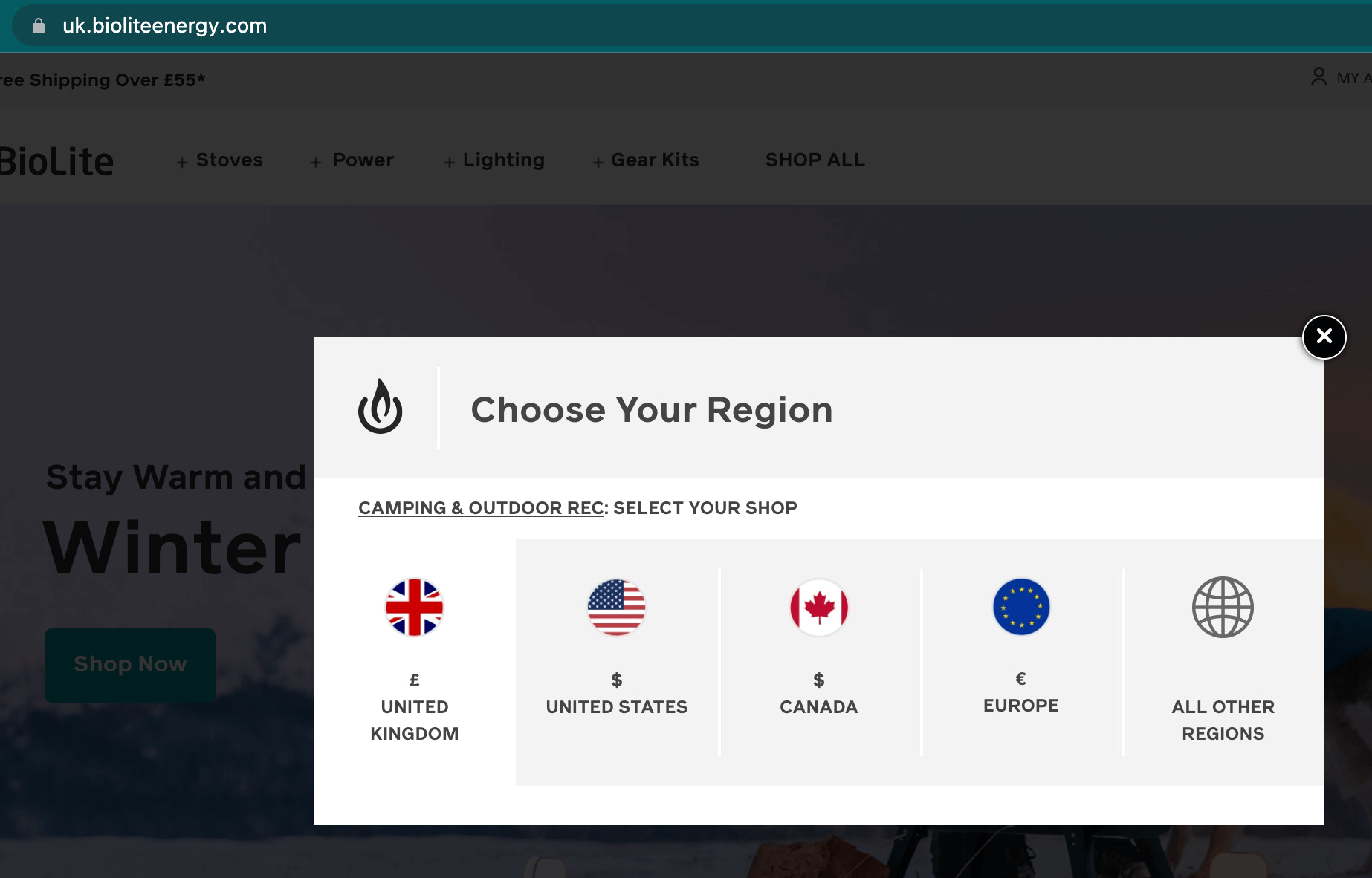Ever visit a website and notice a small extension at the front of the URL? You may have typed it in manually or been automatically redirected. These extensions are subdomains, and subdomains have several applications in yourecommerce businessstrategy.
Find your perfect domain name
Search for domain name ideas and instantly check domain availability.
Learn moreTable of Contents
- What is a subdomain?
- Subdomain vs. domain: What's the difference?
- What is a subdomain used for?
- How to create a subdomain
- Launch your subdomain with Shopify
- What is a subdomain FAQ
What is a subdomain?
A subdomain is an optional part of an internetdomainname that appears before the root domain and TLD. A common subdomain is 'www' and often simply a specific directory on the server. Subdomains are commonly used to separate distinct functions of a website, such as a blog, shop, or member's only area.
It’s an extension of the primary domain that’s dedicated to a specific function or purpose. While most domain names are written as www.domain.com for example, www.wikipedia.com, subdomains have a prefix that sends the user to a different destination. The subdomain might look something likeshop.website.comorcountry.website.com.
While subdomains are technically part of the main domain or top-level domain (TLD), they exist almost independently. Think of them as an extension of your main website. You can change the look and feel for your subdomain page to distinguish it from your main domain, or you can keep the look and feel the same to maintain a consistent brand experience. Subdomains can be incredibly effective for ensuring your quality content is seen by the right users which ultimately can help with search engine optimization.
Is a subdomain a separate website?
A subdomain is not a separate website, but it is somewhat treated as such by Google. Subdomains should not be confused with top-level domains or a second-level domain.
Subdomain vs. domain: What's the difference?
Subdomains are a smaller subset of webpages that live at the same root domain. The domain is the larger network of all subdomains and webpages.
A subdomain, in effect, acts as an extension of a domain.
What is a subdomain used for? 8 popular use cases
Subdomains have many uses, including:
- Selling internationally
- Site testing
- Optimize for mobile
- Launch ecommerce
- Contact
- Client portal
- Blog
- Targeted selling
1. Selling internationally
Subdomains can help you stay organized and create location-specific experiences when yousell internationally.Your subdomain extension may be the abbreviation for the region, country, or continent. For example, you might useuk.website.comfor shoppers in the UK andca.website.comfor Canadian-based customers. When you use a subdomain for each location, you appear more relevant and legitimate, giving shoppers more reason to trust your brand. You can use multiple subdomains if yousell in several countries.
You might also use the subdomain to accommodate different languages. The Spanish version of your website could bees.website.com, and French could be denoted asfr.website.com.这可能是一个更平易近人的方式来管理your subdomains or subdirectories, since multiple countries/regions speak Spanish and multiple countries/regions speak French.
It all depends on the context of the website and what the experience is going to be like for the user. If you have country-specific pricing or shipping rules, for instance, you’ll want to use asubdomain for each country.But if it’s simply a matter of translating your website and making other content adjustments, you might look to use language-specific subdomains.
Learn more:Everything You Need to Sell Worldwide: Introducing Shopify Markets
BioLitesells stoves, portable power stations, and other outdoor gear to customers all over the globe. The website gives users the option to self-select their location, choosing from the UK, US, Canada, Europe, and other locations. Each has its own dedicated subdomain indicating which region the site is for. UK customers are taken touk.bioliteenergy.com, while US shoppers head tobioliteenergy.com.Canada and Europe areca.bioliteenergy.comandeu.bioliteenergy.com, respectively, while all other regions go torow.bioliteenergy.com.
2. Site testing
Many ecommerce businesses use subdomains to create testing sites. These subdomains allow you to test your website or individual pages before you push them live. This is important because it lets you find and address any issues or bugs before the public has access—you can launch most new campaigns with confidence.
It might also be the case that you’re still building your site or aren’t yet ready to fully invest in it.Bandolera Clothing, for example, is on the Shopify domain because it’s using a free plan. The URL featuresmyshopify.comat the end as the domain name—sobandolera-clothing-17acts as the subdomain.

When the brand is ready, it’ll upgrade to a paid plan and own its domain name—and perhaps create its own subdomains down the line as well.
3. Optimize for mobile
Subdomains can also be useful for improving the mobile version of your website as well.
If you shop online using your smartphone, you may have noticed a letter m at the beginning of some site URLs. This is because those sites use a dedicated mobile subdomain for users on phones, tablets, and other small devices.
创建定制的移动电子商务是很重要的experiences that differ from those your customers have on a desktop browser. Mobile responsiveness is the bare minimum—especially considering the opportunity online brands have when it comes to engaging mobile shoppers. Mobile commerce hit nearly$340 billion in sales last year in the USalone, and mobile shoppers spend an average$134 each purchase—a figure that’s trending upward. So there’s plenty of reason to consider the mobile shopper.
But mobile users have highercart abandonment ratesthan people on other devices, clocking in at just over 85%.

Creating a dedicated mobile website using a subdomain, such as the letterm, is one way to tailor your mobile experience without impacting the desktop experience.
4. Launch an ecommerce site
Not every ecommerce site started as an ecommerce site. Some websites start for other reasons. Your website may have originated as a blog, for example, and after building a solid audience you may have decided to monetize your blog through ecommerce. Or you could have launched an affiliate site that you later want to add an ecommerce arm to.
Somewebsites migrateto another software that’s built specifically as anecommerce platform.But others don’t bother with migration and instead create a dedicated subdomain for ecommerce specifically. Many websites useshopas their subdomain—so you could doshop.yourwebsite.com.Other common words includestoreorbuy.
Lady Gaga uses this approach to differentiate her regular website from her ecommerce site. When you visitladygaga.com, you see lots of different content—not necessarily products for sale. That’s because someone visiting a celebrity’s website may not initially think of buying something.

But people who click Shop, likely are interested in buying something and expect to see lots of items for sale. Lady Gaga keeps her ecommerce entity separate from her main branded site, making sure to provide something for everyone.

5. Contact page
YourContact Usor tech support pages may also warrant a new subdomain, especially if your tech stack demands it.Endymattresses uses a subdomain for its contact page,answers.endy.com.You could also use words likesupport,help, orcontact.
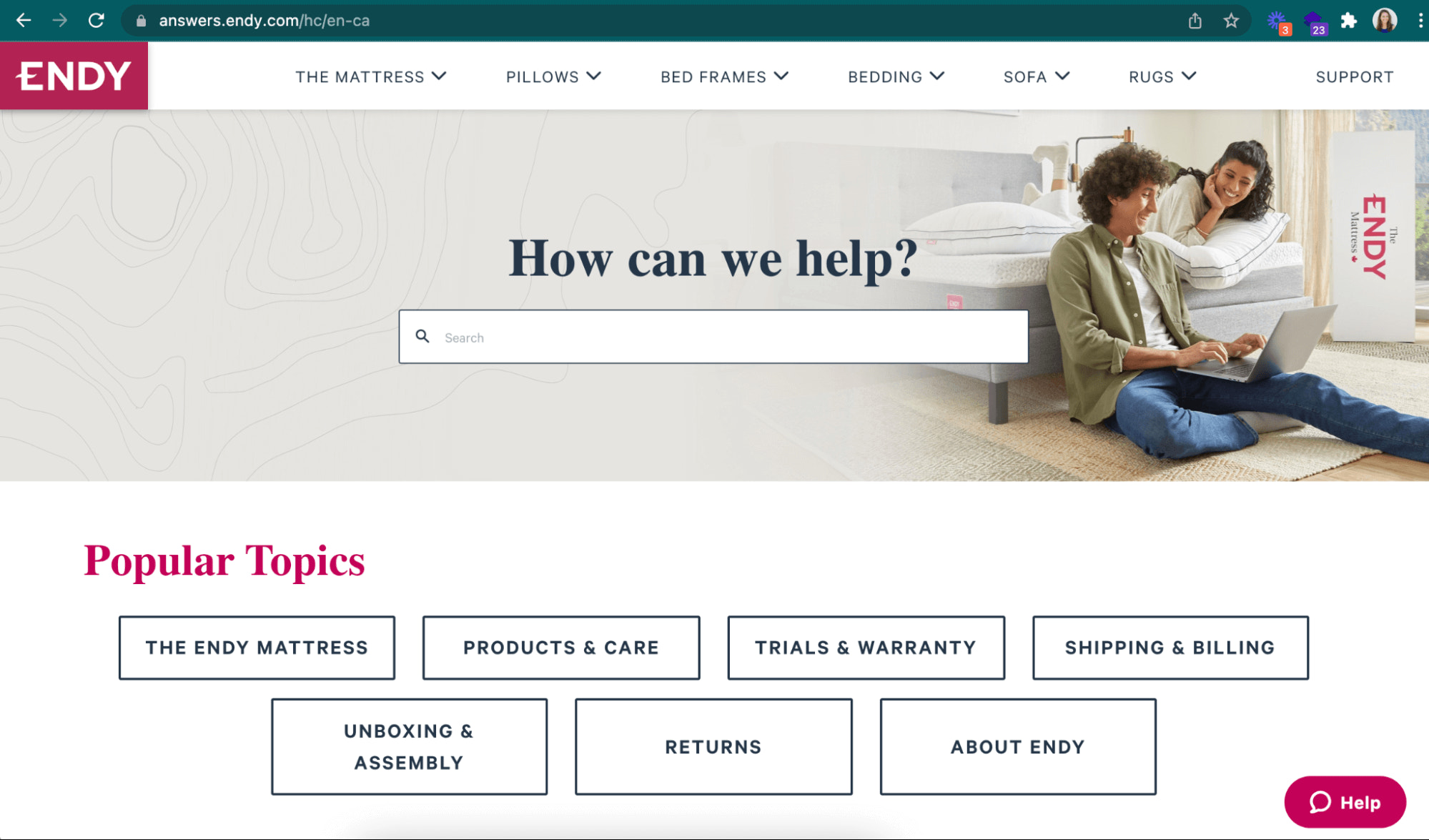
6. Client portal
Similarly, you might have a client portal your customers can sign in to. Client portals are nice for shoppers because they can sign in to check on order status, previous orders, current promotions, loyalty program status, and more. And it’s nice for brands because customers are empowered to check on their order themselves, instead of taking time from your support staff every time they want an order update.
Seeadoesn’t use a subdomain for its client portal, but the sustainable swimwear brand has a separate subdomain dedicated to returns and exchanges. Users visitreturns.theseea.comto initiate areturn or exchange.You’ll notice this subdomain has significantly limited functionality when compared to the main site, because it’s meant for one specific purpose.
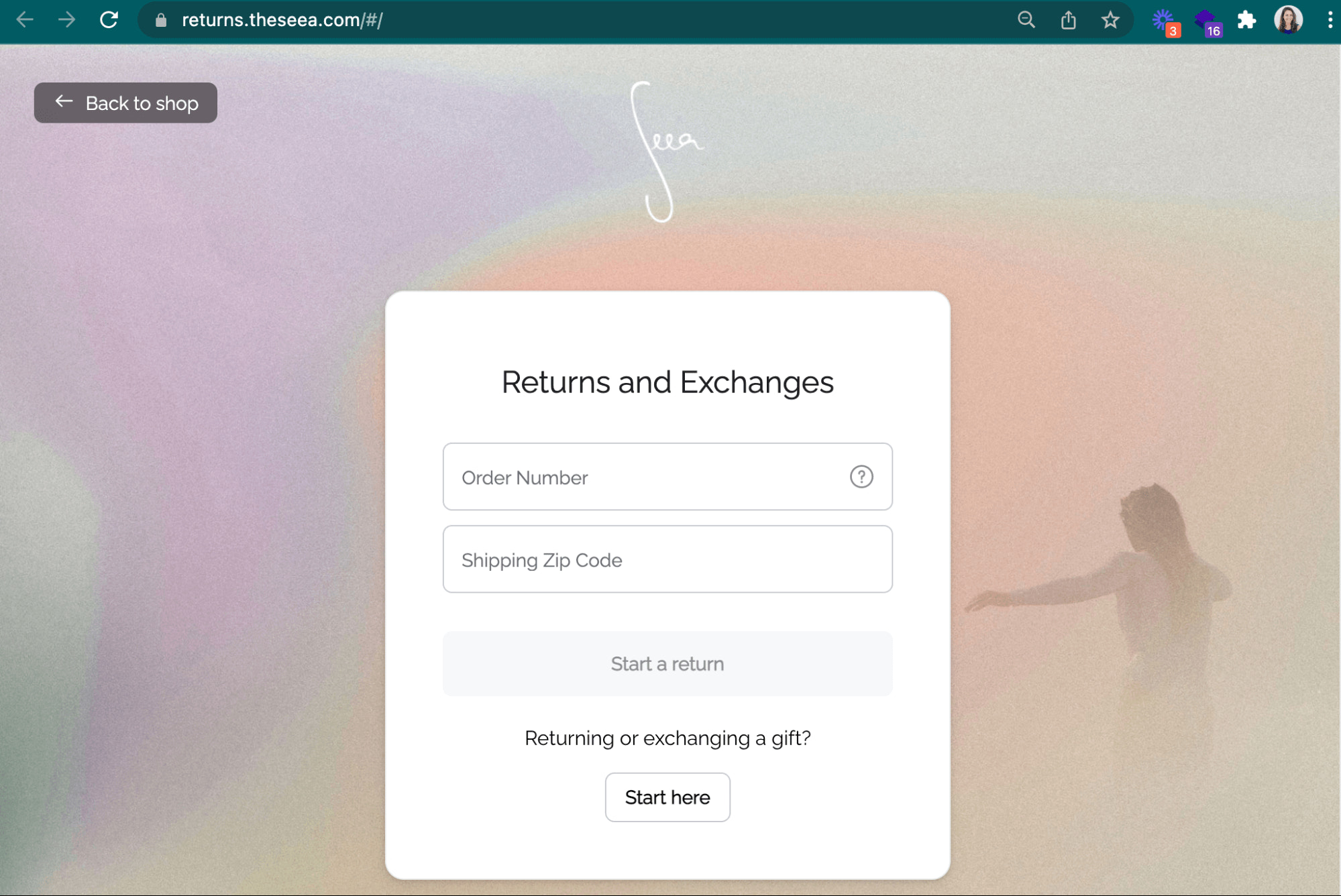
7. Blog
Some websites use a subdomain to separate their blog from the rest of the website experience. In manyblog examples, the subdomain has distinct functionality that varies from the rest of the site. If you want tostart a blogfor your website, you may consider hosting it on a subdomain of your main site.
TheWho Gives A Crap bloglives atblog.whogivesacrap.org, while the main domain is simplywhogivesacrap.org.

8. Targeted selling
You can use subdomains to appeal to different audiences or business goals. You could create subdomains for specific customer segments or create a subdomain to rank for specific keywords.
GRAVhas a subdomain forselling wholesalethat lives separately from its consumer-facing site. While its regular domain name isgrav.com, wholesale buyers will go towholesale.grav.com.

Find your perfect domain name
Search for domain name ideas and instantly check domain availability.Learn more3 subdomain examples
现在我们已经介绍了一些常见的用例ubdomains, let's look at some examples in the wild.
1. Amazon
While the majority of Amazon users simply head on over towww.amazon.comwhen looking to shop online, Amazon is known for their extensive subdomain collection.
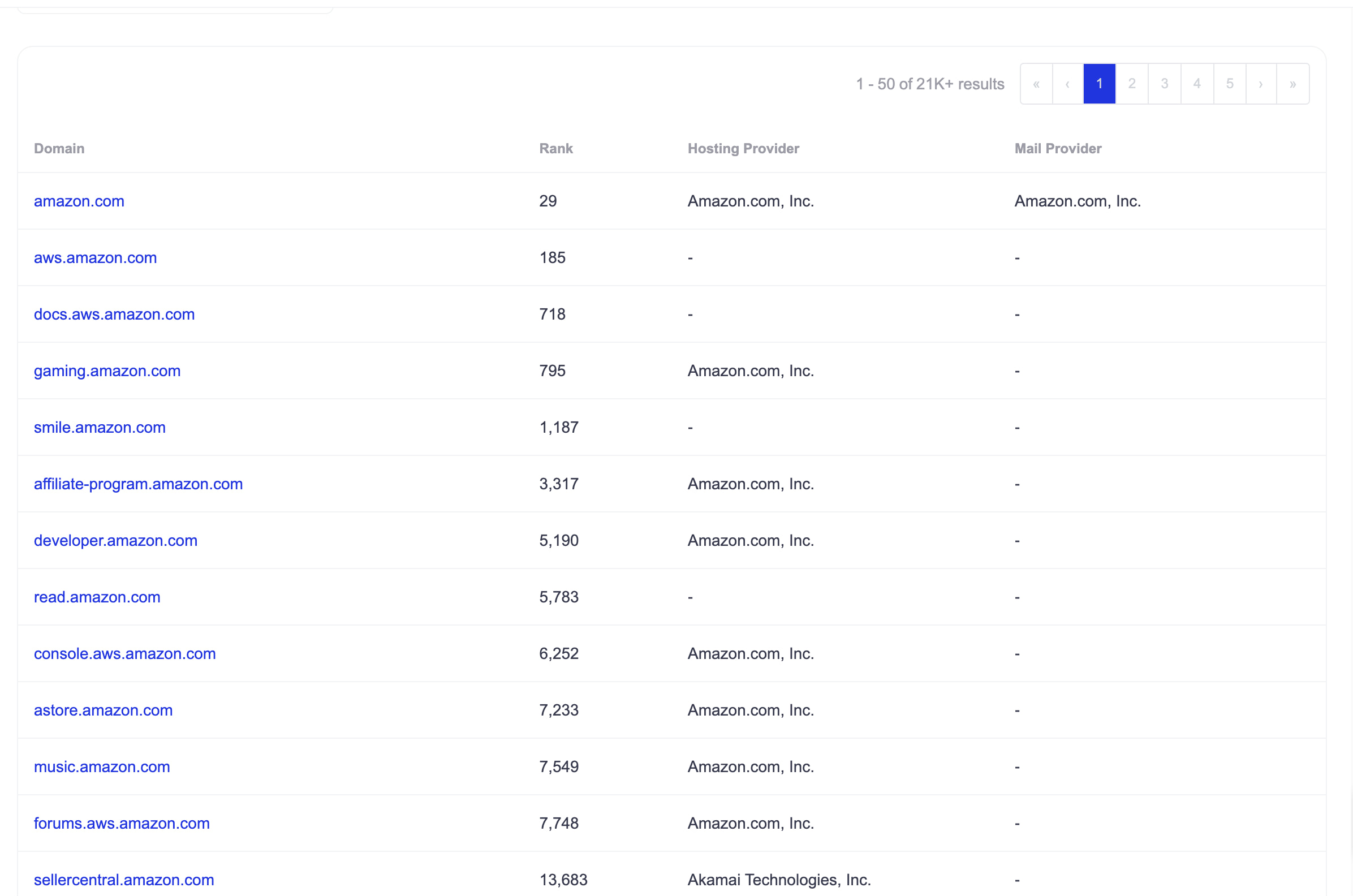
For example the subdomainaws.amazon.comdirects visitors to a page dedicated specifically to all things AWS. Head tomusic.amazon.comand you'll find a page covering Amazon's music streaming service. Amazon uses subdomains to help ensure they can share targeted content and solutions based on their diverse user base.
2. Sidekick blog
Sidekick, a Canadian based muscle recovery and performance company, uses the subdomainblog.sidekicktool.comto direct its users to their blog, where they share tips on recovery and optimal athletic performance.
The subdomain is designed to put their frequent content at the forefront of the viewing experience and helps keep their homepage and blog content separate and organized.

3. Shopify help center
At Shopify, we use the subdomainhelp.shopify.comas a dedicated landing page for our users needing assistance with our suite of Shopify products. While our community can access the help center throughShopify.com,help.shopify.comhelps keep everything streamlined for those needing assistance.
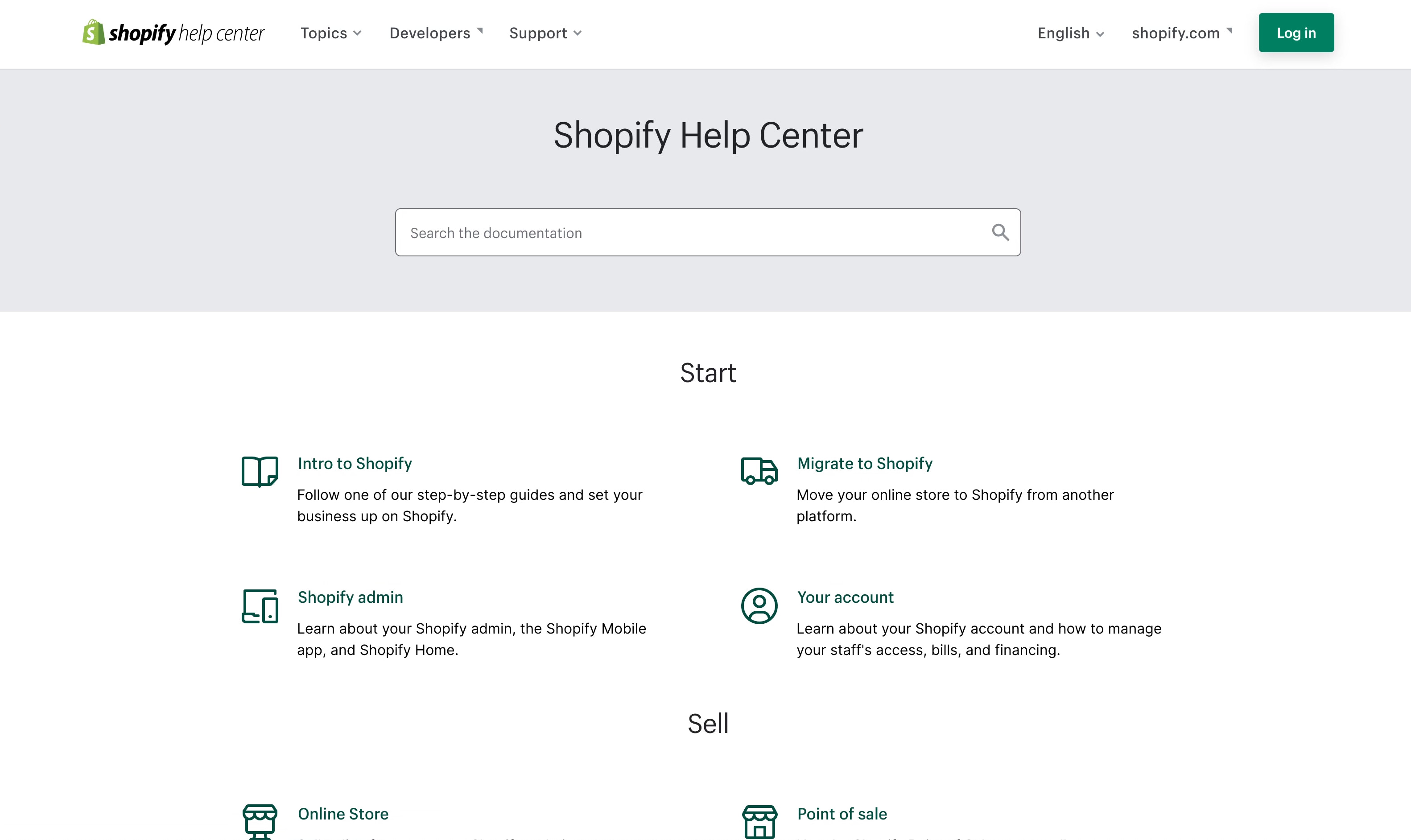
Although not every brand will ultimately need a subdomain, they can be great to use when looking to publish tailored content
How to create a subdomain
While the steps to create a subdomain will vary slightly depending on who you use forweb hosting, creating a subdomain usually involves making some slight changes within the settings of your domain registrar and hosting provider. During the process, you may come across terms such as a record and cpanel.
If you're using Wordpress, here's anexcellent resourcefor adding a subdomain. If you're using Shopify, we cover everything you need to know on how to set up subdomains in our step by step tutorial.
Steps
From your Shopify admin, go toSettings>Domains.
ClickManagefor the domain that you want to configure.
In theSubdomainssection, clickAdd subdomain.
Enter the prefix that you want to add:
For international subdomains, enter thetwo letter country codefor your target market. For example,
eufor Europe, orcafor Canada.For all other subdomains, enter the text that you want to add as a prefix. For example,
blogorshop.
ClickAdd subdomain
When you add a subdomain, Shopify's default CNAME is automatically added to your DNS settings. If you want to point the subdomain to a specific market or website, then you can do the following tasks:
If you're needing to create different subdomains simply replicate the steps above.
Launch your domain (and subdomains) with Shopify
Managing a domain is complicated enough without throwing subdomains into the mix. That’s why you need a tech stack that simplifies everything in the back end for you.
When you register your domain and subdomains with Shopify, it immediately connects to your online store—no third-party apps or complex setup processes necessary.
Ready to create your first business? Start your free trial of Shopify—no credit card required.
What is a subdomain FAQ
What is the difference between a domain and a subdomain?
Both domains and subdomains can act as web addresses that users type into their browsers to visit your website, but subdomains are smaller subsets of webpages that live at the same root domain, whereas a domain is a larger network of subdomains and web addresses.
What is the purpose of a subdomain?
A subdomain allows websites to organize its content into separate sections dedicated to a specific function or type of content. For example a website may house its blog, shop, or client portal on unique subdomains (blog.example.com, shop.example.com, etc).
Is a subdomain a separate website?
While a subdomain is not a completely separate website, it is treated as such by search engines. This can be very useful for partitioning off content that you want to serve to a certain subset of users.
What are some subdomains?
一些常见的子域包括用于切开n off ecommerce stores (store.example.com, shop.example.com), blogs (blog.example.com), message boards (community.example.com, forums.example.com), customer support (support.example.com, help.example.com), or region-specific content (uk.example.com, us.example.com).


